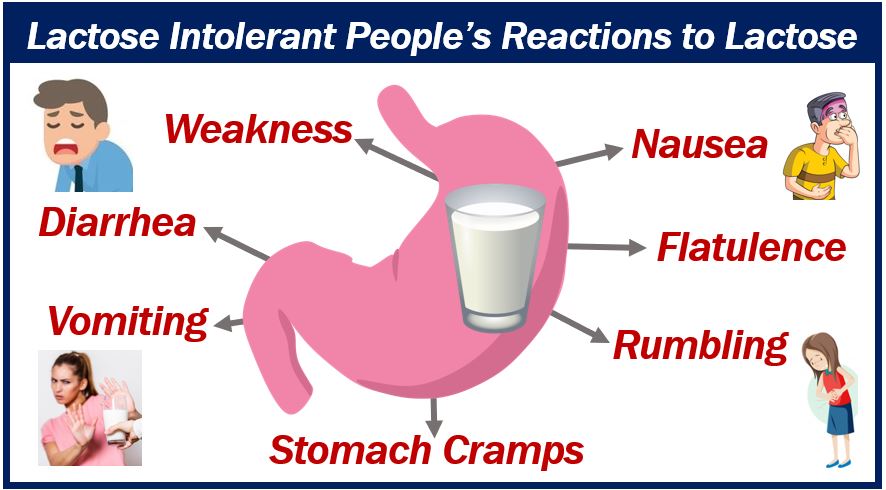Milk is a delicacy for many, it is the first meal for almost everyone from birth through breastmilk but it is sad that for some, milk does not choose them. Ever seen or heard people present with diarrhea, gas and bloating after eating or drinking dairy products? Such persons could be having a condition that we refer to as lactose intolerance.
If you are wondering why this happens to people like these, here it is. People with lactose intolerance are unable to fully digest the sugar (lactose) in milk. When milk ingested, it is broken down by an enzyme called lactase and lactose intolerant people have too little of this enzyme. During digestion, the enzyme lactase turns milk sugar (lactose) into two simple sugars (glucose and galactose) which are absorbed into the bloodstream through the intestinal lining to be put to use in the body. For persons deficient of this enzyme or have low levels, lactose in the food moves into the colon (large intestines) instead of being processed and absorbed. In the colon, normal bacteria interact with the undigested lactose, causing the signs and symptoms of lactose intolerance which we talk about here later.

Although one can still digest milk with low levels of lactase, having levels that are too low will lead to symptoms after you eat or drink anything dairy. The best and most common way of managing lactose intolerance is to take out diary foods from the diet although there is also another way someone with the condition can manage without having to give up all dairy foods by adding a liquid or powder of the lactase enzyme to milk to break down the lactose. The signs and symptoms of lactose intolerance usually begin from 30 minutes to two hours after eating or drinking foods that contain lactose or diary foods. The common signs and symptoms include diarrhea, bloating, stomach upsets, Nausea and at times vomiting.
We have three types of lactose intolerance. Different factors cause the lactase deficiency underlying each type and we get to dissect each one of them.
Primary Lactose Intolerance
This is the commonest type. Naturally infants are born with enough lactase and are able to digest breast milk comfortably but when this is replaced during complementary feeding the amount of lactase produced normally drops, but usually remaining high enough to digest the amount of dairy in a typical adult diet. In primary lactose intolerance, lactase production falls off sharply by adulthood, making it difficult to digest milk products.
Secondary Lactose Intolerance
In this form of lactose intolerance, it occurs when small intestine decrease lactase production after an illness, injury or surgery involving the small intestine. Diseases associated with secondary lactose intolerance may include intestinal infection, celiac disease, bacterial overgrowth and Crohn’s disease. The beauty about this one is that in most cases treatment of the underlying disorder might restore lactase levels and improve signs and symptoms, although this can take time.
Congenital or developmental lactose intolerance
This type is genetical though rare where a child is born deficient of the enzyme lactase. For this to be passed though, both the mother and the father must pass on the same gene variant for a child to be affected, a pattern of inheritance we call autosomal recessive.
So the next time you notice a pattern especially after consuming diary products, before you conclude that it is ulcers or food poisoning, you may need to check in with your doctor to rule out lactose intolerance.

Interesting… I had a good read
Thank you Liv, I am so thankful